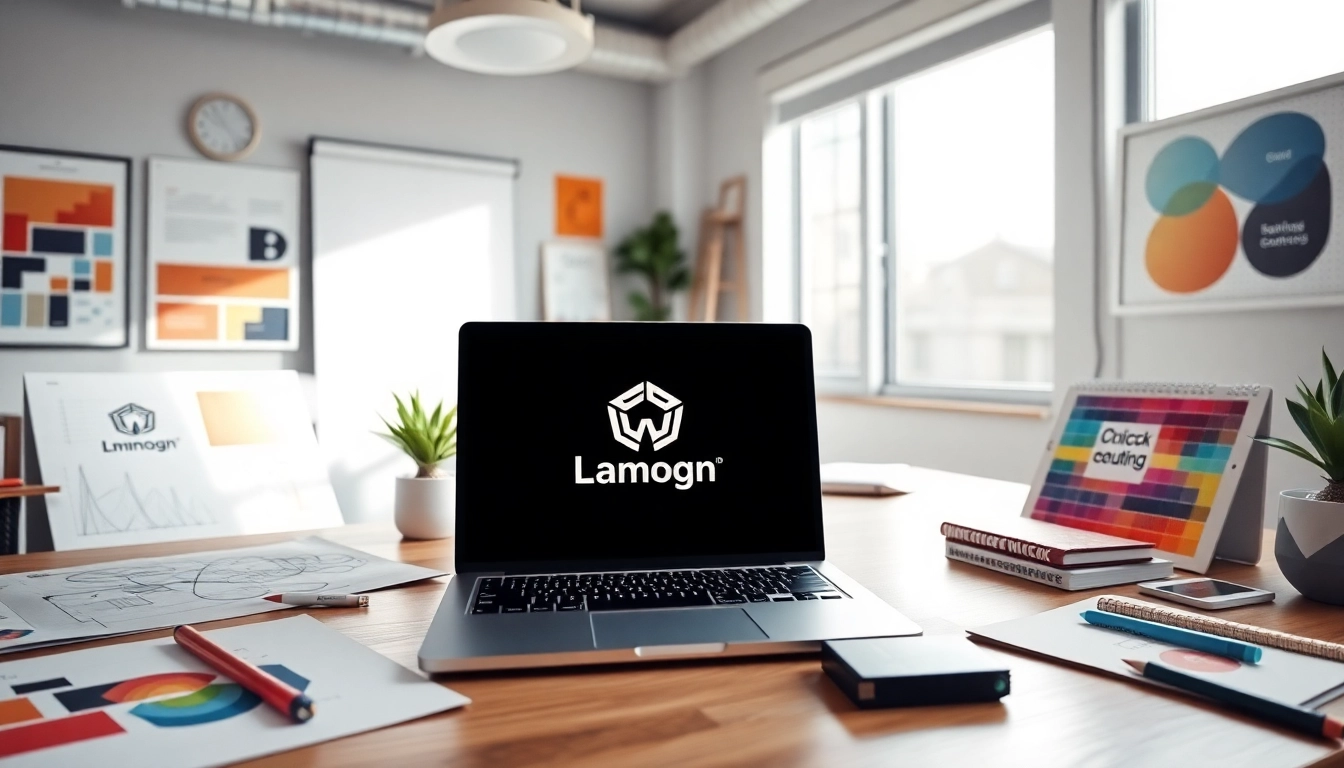Understanding AI-Powered Branding Services
In an age where digital transformation is the cornerstone of business growth, AI-powered branding services have emerged as a revolutionary approach to enhance brand identity. These services leverage artificial intelligence to streamline branding processes, helping businesses create, maintain, and evolve their brand image effectively. This article explores the essence of AI-powered branding services, the benefits they provide, the transformation they bring to brand identity creation, and the crucial features that define these innovative tools.
What Are AI-Powered Branding Services?
AI-powered branding services refer to a suite of tools and platforms that utilize artificial intelligence technologies to assist businesses in developing, managing, and enhancing their brand identity. These services encompass various functions such as logo design, content generation, visual identity creation, and market analysis—all driven by AI algorithms and machine learning capabilities.
At their core, these services aim to make branding more efficient and accessible. With AI, companies can automate repetitive tasks, analyze consumer behavior, and generate creative assets tailored to their target audience, resulting in a cohesive and appealing brand presentation.
Benefits of Utilizing AI in Branding
The integration of AI into branding strategies offers numerous advantages:
- Cost Efficiency: Automating routine branding tasks reduces the need for extensive human input, leading to significant cost savings.
- Improved Speed: AI can process vast amounts of data in real-time, allowing brands to speed up the design and adaptation of their branding elements.
- Enhanced Creativity: By leveraging AI’s ability to analyze trends and consumer preferences, brands can create unique and relevant content that resonates with audiences.
- Data-Driven Decision Making: AI tools provide insights into consumer behavior and market trends, enabling brands to make informed decisions about their branding strategies.
- Scalability: As brands grow, AI can help scale branding efforts without the corresponding increase in costs typically associated with such expansion.
How AI is Transforming Brand Identity Creation
AI is reshaping the landscape of brand identity creation in several innovative ways:
- Personalized Branding: AI analyzes user data to tailor branding elements to specific audience demographics, ensuring that marketing messages and visual identities resonate with individual preferences.
- Rapid Prototyping: AI tools can generate multiple design prototypes quickly, allowing brands to experiment with different logos, color palettes, and typographies without extensive time investment.
- Continuous Learning: AI systems learn from consumer interactions and feedback, enabling brands to refine their identities based on real-time data.
Key Features of AI Branding Tools
Automated Logo Creation
One of the most popular features of AI branding tools is automated logo creation. Platforms like Looka and uBrand utilize AI algorithms to generate unique logo designs based on user inputs such as business names, industry types, and color preferences. The automation not only saves time but also offers diverse design options that entrepreneurs may not have considered.
For instance, AI can explore color psychology and design trends to produce logos that align with contemporary aesthetics and consumer expectations. This means that businesses can easily create professional logos without hiring a design team, thus democratizing access to high-quality branding assets.
Content Generation and Management
Creating consistent and engaging content across all platforms is crucial for brand identity. AI-powered branding services can assist in generating marketing content, including social media posts, blog articles, and marketing copy. Tools such as Jasper and ChatGPT leverage natural language processing to generate text that is not only grammatically correct but also tailored to the brand’s tone and voice.
This capability allows brands to maintain a cohesive narrative while relieving marketing teams of the burden of creating content from scratch. Furthermore, these AI tools can analyze the performance of different content types, helping brands refine their content strategies for maximum engagement.
Real-time Analytics for Brand Performance
Understanding how a brand performs in the market is essential for sustaining growth. AI branding services provide real-time analytics that track various metrics, such as brand awareness, engagement rates, and customer sentiment. By analyzing this data, businesses can gain insights into how their branding efforts are resonating with their target audience.
For example, AI tools can identify which branding elements are receiving positive feedback and which are falling flat, allowing brands to make necessary adjustments promptly. This feedback loop ensures that branding strategies remain agile and responsive to market changes.
Choosing the Right AI Branding Service
Evaluating Your Business Needs
Before selecting an AI branding service, it’s vital to assess your business’s specific needs. Consider factors such as your target audience, industry, and current branding strategies. Determine which aspects of branding you wish to improve, such as logo design, content creation, or market analysis.
For instance, if your brand is looking to enhance customer engagement via personalized content, selecting a platform with robust content generation capabilities would be essential. Understanding your business goals will guide you toward the best AI solutions tailored to your needs.
Comparing Popular AI Branding Platforms
The market for AI branding services is increasingly competitive. Notable platforms include:
- Looka: Known for its intuitive logo design tool that helps users create customized logos effortlessly.
- uBrand: Focuses on comprehensive branding solutions, including logo design and brand identity management.
- AdCreative.ai: Specializes in creating conversion-focused ad creatives and marketing content through AI.
When comparing these platforms, consider user experience, available features, customer support, and pricing structures to identify which service best aligns with your branding objectives.
Assessing Cost vs. Benefit Ratio
Budget is a crucial factor in choosing an AI branding service. Costs can range significantly depending on the features offered and the scale of the service. For example, basic AI logo design services might be priced as low as $20, while more comprehensive branding platforms can cost hundreds of dollars per month.
It’s essential to evaluate the benefits achieved through these tools against their costs. Calculate potential ROI by considering how improved branding can lead to increased sales and customer satisfaction. Investing in a high-quality AI service can yield significant long-term benefits that far outweigh initial expenditures.
Best Practices for Implementing AI Branding Solutions
Integrating AI with Traditional Branding Strategies
While AI offers transformative capabilities, it should be integrated synergistically with traditional branding strategies. Use AI to augment your existing branding efforts rather than replacing them entirely. For example, AI can assist in tasks like market research or content generation, while human insight remains invaluable for maintaining brand authenticity and emotional connection with consumers.
Consider creating a task force that encompasses both digital marketers and traditional branding experts to bridge the gap between these two modalities, ensuring cohesive branding strategies that leverage the strengths of both AI and human creativity.
Measuring Success: Key Performance Indicators (KPIs)
Establishing clear KPIs is crucial to monitor the success of your AI branding initiatives. Key metrics may include:
- Brand Awareness: Track metrics like social media mentions, website traffic, and press coverage to assess visibility.
- Engagement Rates: Measure likes, shares, comments, and interactions on branding-related content to understand resonance.
- Conversion Rates: Analyzing how well branding efforts convert leads into sales can determine the effectiveness of your strategies.
Regularly review these KPIs to identify trends, successes, and areas for improvement as your brand evolves with AI implementation.
Iterative Design and Continuous Improvement
The beauty of AI-powered branding lies in its ability to learn and adapt continually. Implement an iterative design process where branding materials are tested, feedback is gathered, and adjustments are made over time. This approach allows brands to remain relevant in a fast-changing market and to pivot quickly based on consumer feedback.
Continual improvement should be woven into the fabric of your branding strategy, ensuring that you are not only responding to consumer needs but also anticipating future trends.
Future Trends in AI-Powered Branding
Predictions for AI Role in Branding
As technology advances, the role of AI in branding will likely become even more sophisticated. Future trends may include:
- Hyper-Personalization: Brands will leverage AI to create even more personalized customer experiences, driven by data analytics and consumer behavior.
- Augmented Reality (AR) and Virtual Reality (VR): AI could enhance AR/VR platforms to create immersive branding experiences that engage customers in unique ways.
- Enhanced Predictive Analytics: Future AI tools may offer unprecedented insights into consumer behavior, enabling businesses to forecast trends and align branding strategies accordingly.
Emerging Technologies Impacting Branding
In addition to AI, emerging technologies such as blockchain and the Internet of Things (IoT) are poised to impact branding. Blockchain may offer new ways to verify brand authenticity or reward customer loyalty, while IoT devices could create more touchpoints for brands to interact with consumers.
Brands that embrace these technologies alongside AI will be better positioned to innovate and engage with their audience in meaningful ways.
Preparing Your Brand for Future Innovations
To thrive in the evolving landscape of branding, businesses should foster a culture of innovation and adaptability. This includes staying informed about technological advancements, continuously investing in AI capabilities, and training teams to harness these tools effectively.
Regularly revisit your branding strategy to align with new developments and consumer expectations. By embracing change and preparing for the future, brands can ensure they remain relevant and competitive.



